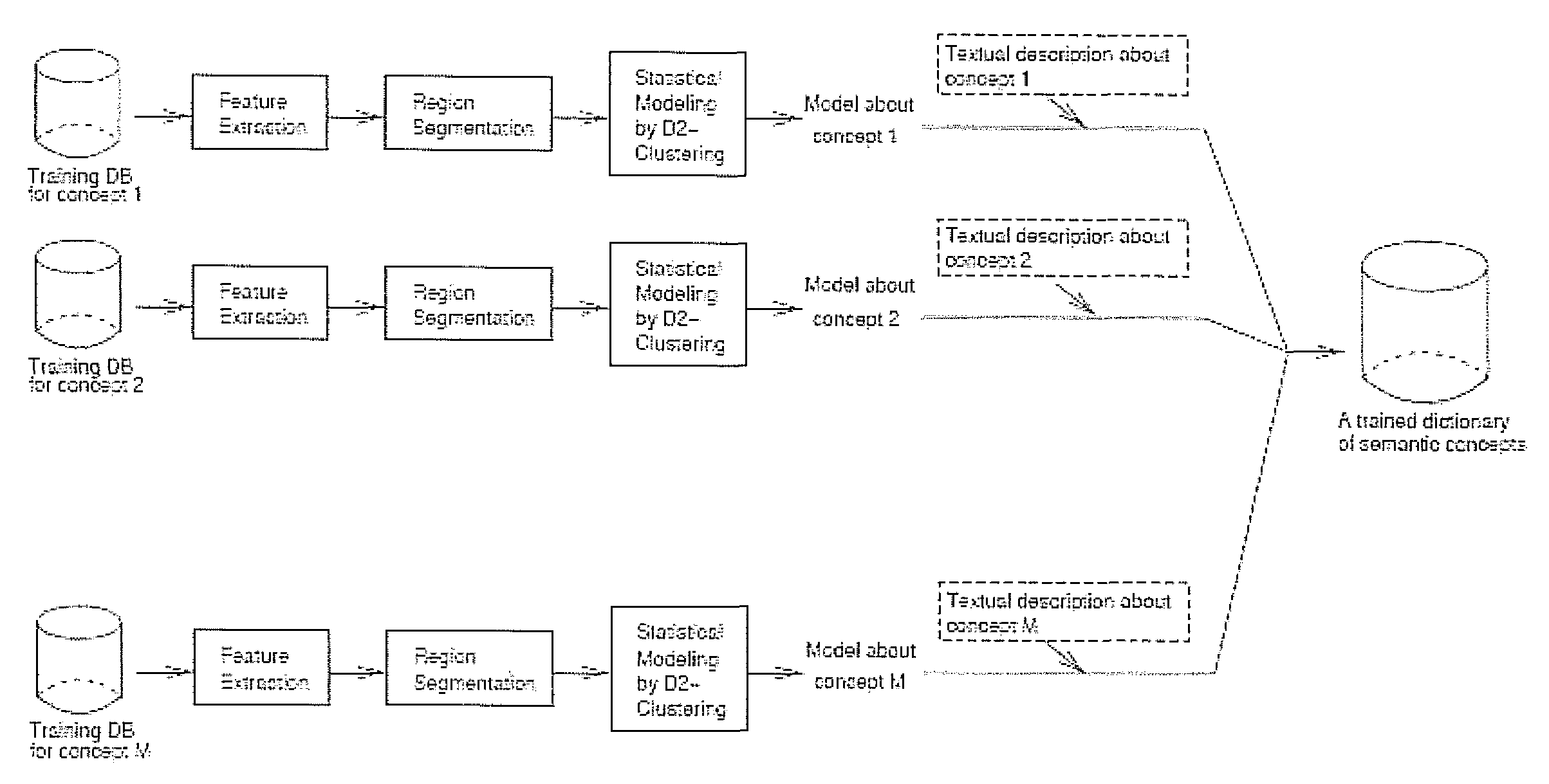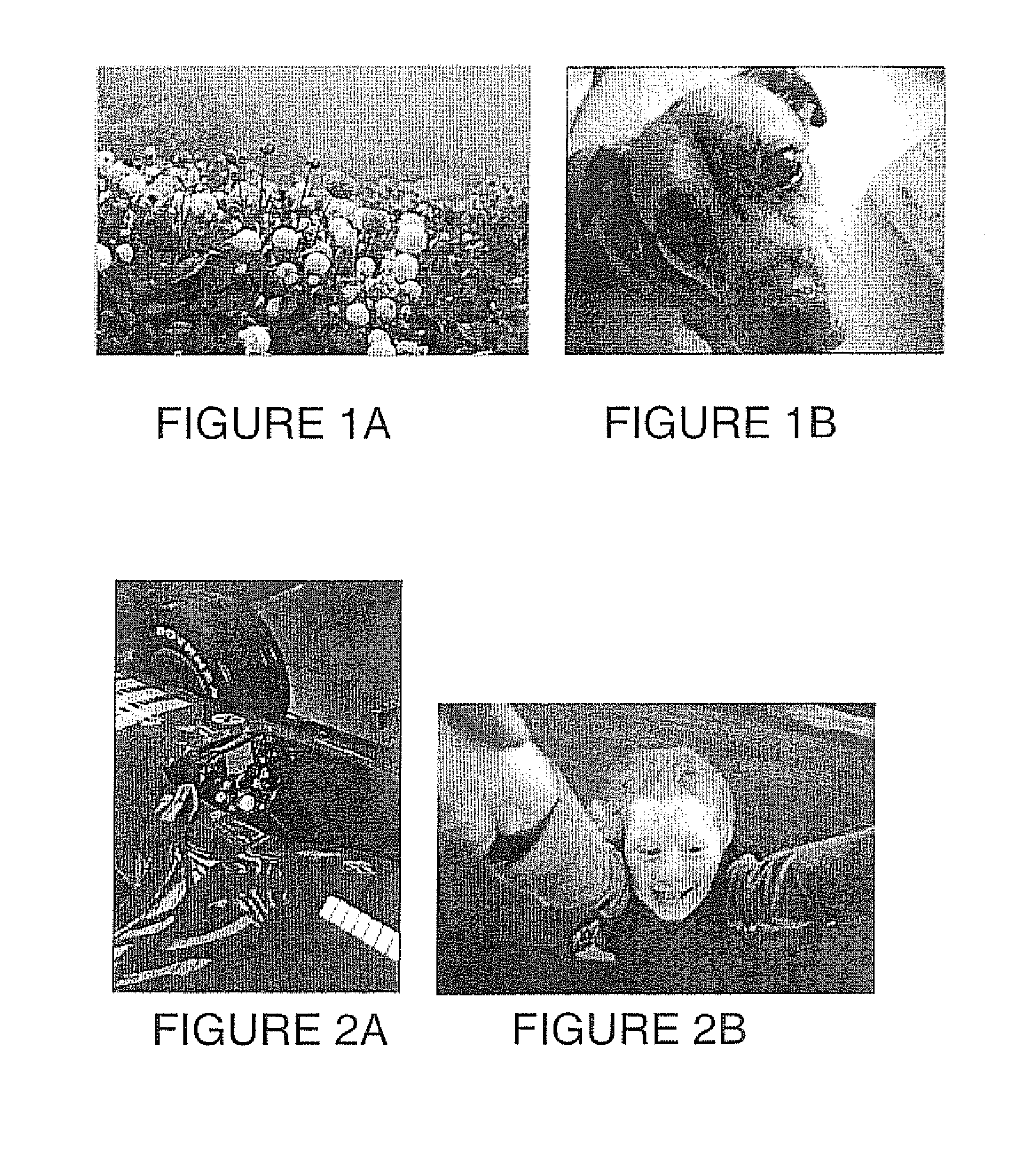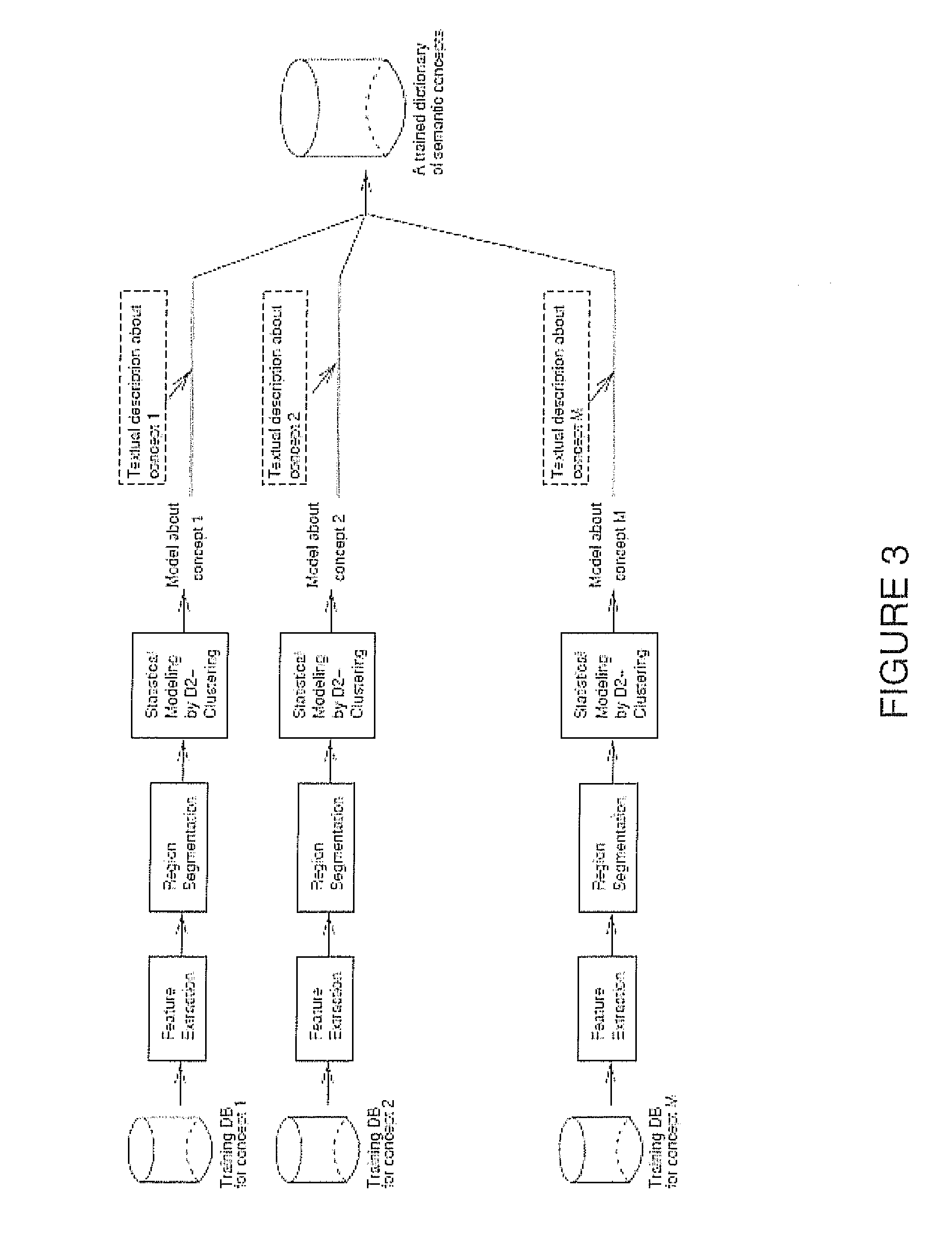Real-time computerized annotation of pictures
a computerized and real-time technology, applied in the field of picture annotation, can solve the problems of not analysing the pixel content of images, unable to search unannotated image collections, and annotation tends to be highly subjective, so as to efficiently build a probability measure and minimize the total within the cluster distance
- Summary
- Abstract
- Description
- Claims
- Application Information
AI Technical Summary
Benefits of technology
Problems solved by technology
Method used
Image
Examples
Embodiment Construction
Training
[0052]The training procedure is composed of the following steps. Label the concept categories by {1,2, . . . ,M}. A Corel database is used for training with M=599. Denote the concept to which image i belongs by gi, giε{1,2, . . . ,M}.[0053]1) Extract a signature for each image i, iε{1,2, . . . ,N}. Denote the signature by βi, βiεΩ. The signature consists of two discrete distributions, one of color features, and the other of texture features. The distributions on each type of features across different images have different supports,[0054]2) For each concept mε{1,2, . . . ,M}, construct a profiling model Mm using the signatures of images belonging to concept m: {βi:gi=m,1≦i≦N}. Denote the probability density function under model Mm by φ(s|Mm), sεΩ.
[0055]FIG. 3 illustrates this training process. The annotation process based upon the models will be described in subsequent sections.
The Training Database
[0056]It is well known that applying learning results to unseen data can be si...
PUM
 Login to View More
Login to View More Abstract
Description
Claims
Application Information
 Login to View More
Login to View More - R&D
- Intellectual Property
- Life Sciences
- Materials
- Tech Scout
- Unparalleled Data Quality
- Higher Quality Content
- 60% Fewer Hallucinations
Browse by: Latest US Patents, China's latest patents, Technical Efficacy Thesaurus, Application Domain, Technology Topic, Popular Technical Reports.
© 2025 PatSnap. All rights reserved.Legal|Privacy policy|Modern Slavery Act Transparency Statement|Sitemap|About US| Contact US: help@patsnap.com



